Yellowstone National Park: A First Time Visitor Guide
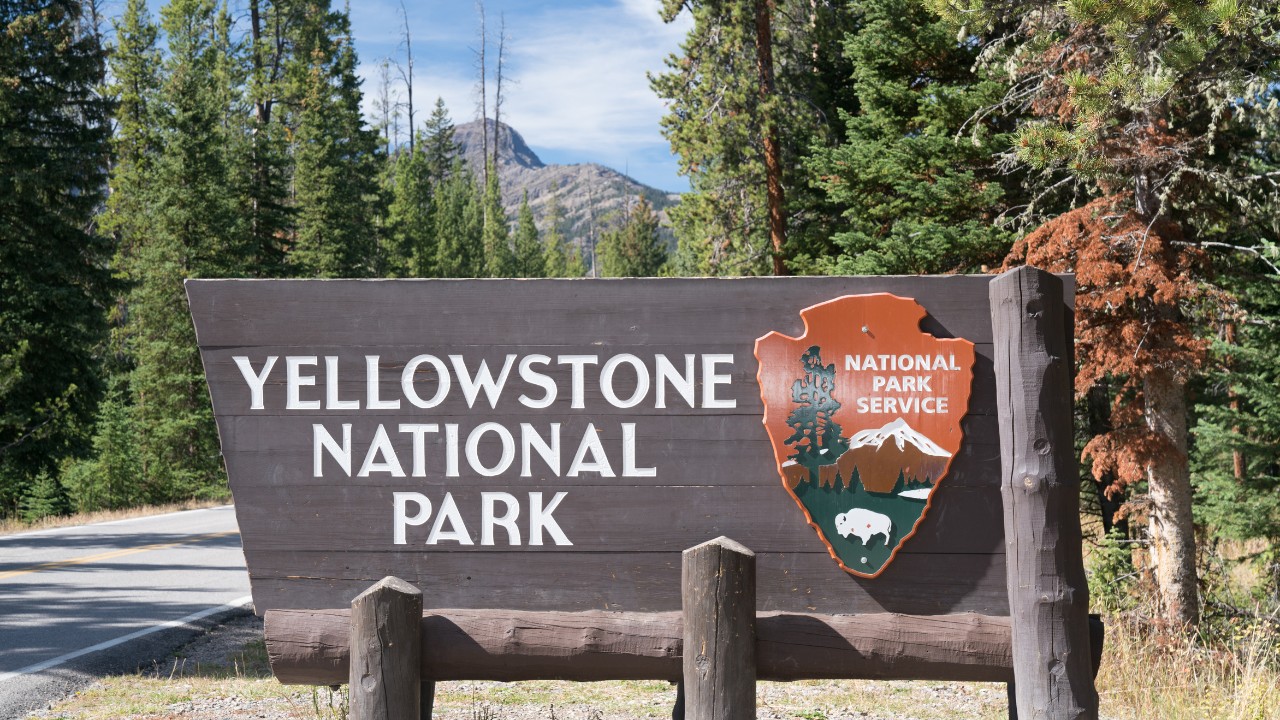
Yellowstone National Park, established in 1872, is not only America’s first national park but also a global icon of natural beauty and geological wonders. Spanning over 3,400 square miles across Wyoming, Montana, and Idaho, Yellowstone offers a rich tapestry of geothermal features, abundant wildlife, and breathtaking landscapes. For first-time visitors, exploring this vast park can be both exciting and overwhelming. This guide will help you navigate the highlights and plan an unforgettable trip!
Basic info:
- Name: Yellowstone National Park
- Location: Wyoming
- Fee: $30 per car
- Things to do: Hiking, bike riding, geysers and more (see recommendations/tours)
Getting There:
Yellowstone is accessible by car and through several regional airports. Depending on where you enter, you can tailor your journey to focus on specific attractions.
Main Entrances:
- North Entrance (Gardiner, Montana): The only entrance open year-round, ideal for visiting Mammoth Hot Springs.
- West Entrance (West Yellowstone, Montana): The most popular entrance, providing easy access to geyser basins.
- South Entrance: Perfect for combining a visit to Grand Teton National Park.
- East Entrance (Cody, Wyoming): Scenic route through the Shoshone National Forest.
- Northeast Entrance (Cooke City, Montana): Gateway to the Lamar Valley.
Nearest Airports:
- Yellowstone Regional Airport (COD) in Cody, Wyoming.
- Bozeman Yellowstone International Airport (BZN) in Montana.
- Jackson Hole Airport (JAC) in Wyoming.
Photos:
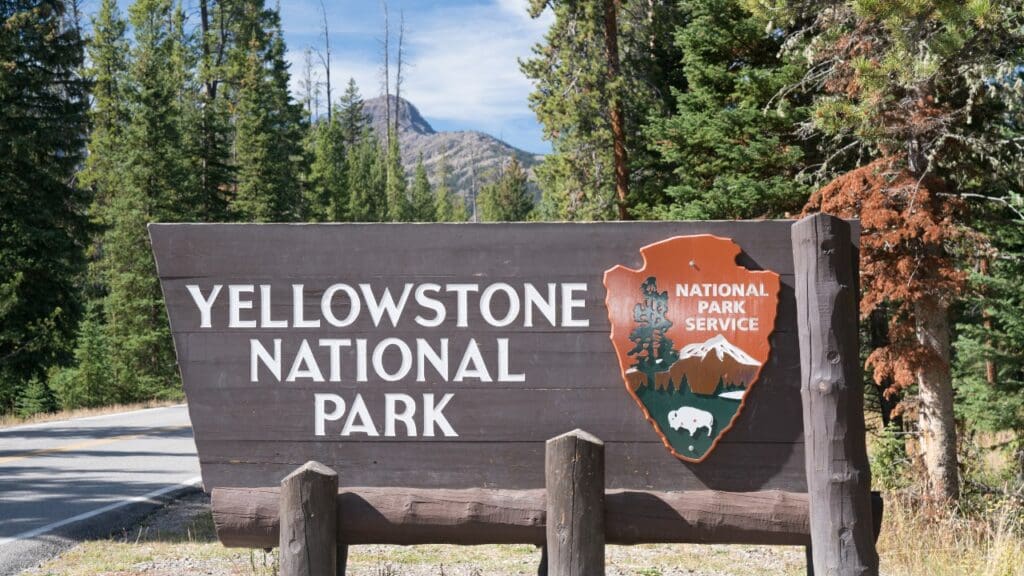
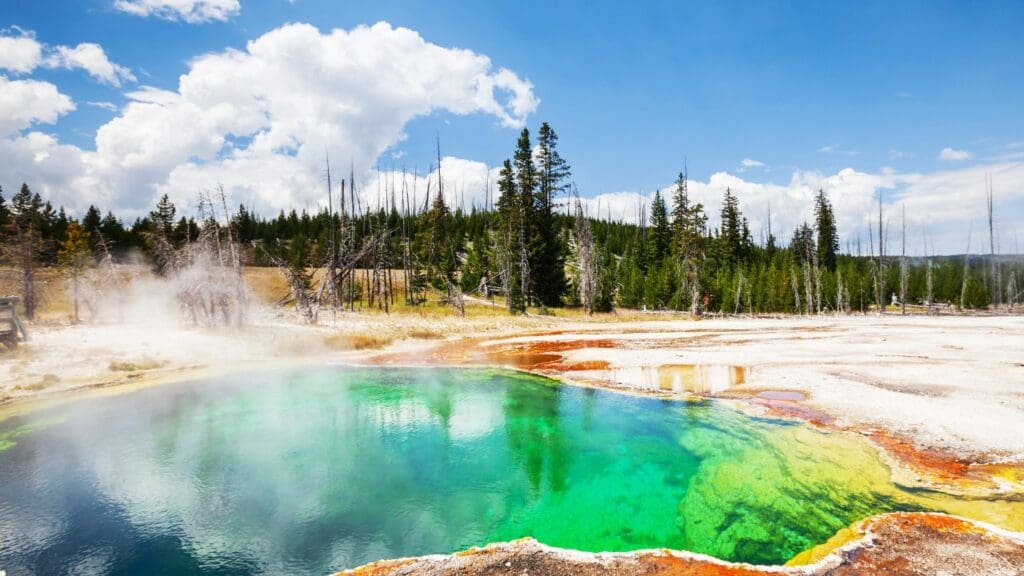
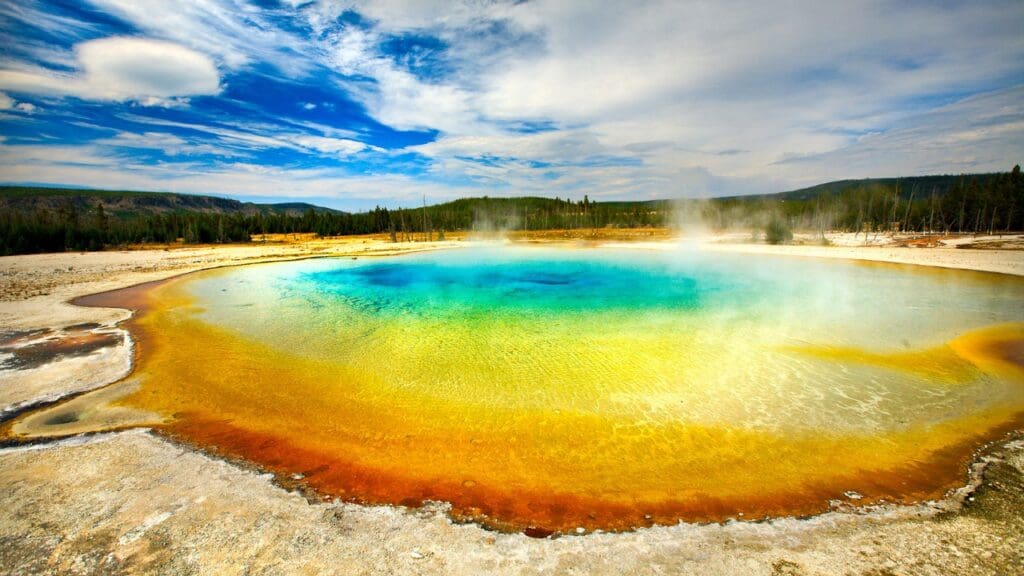
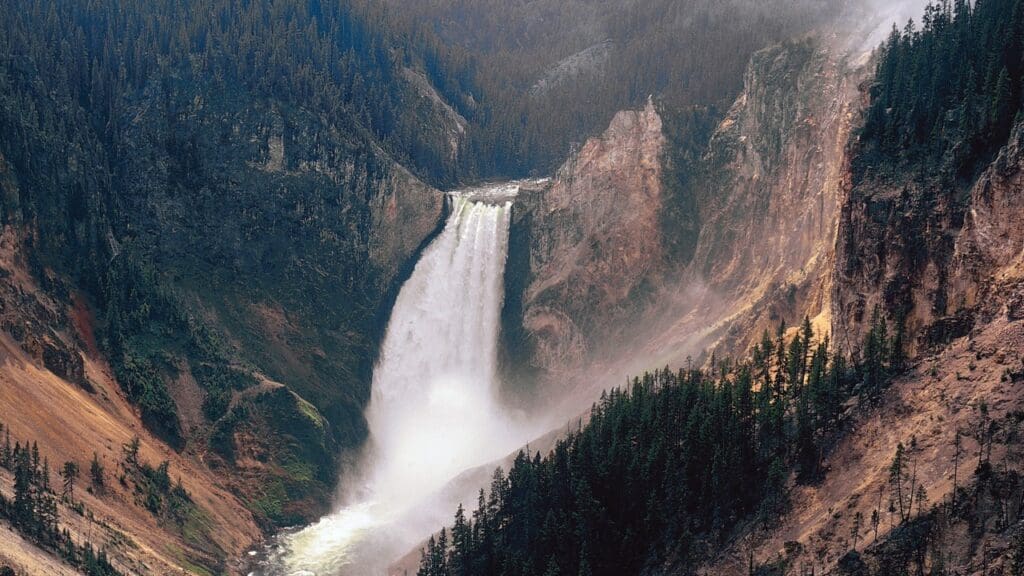
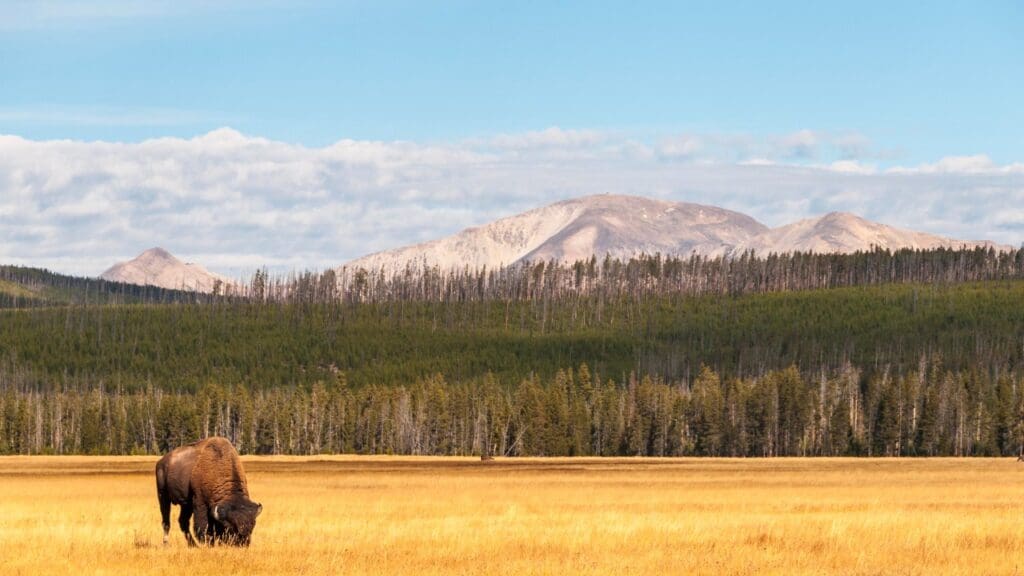
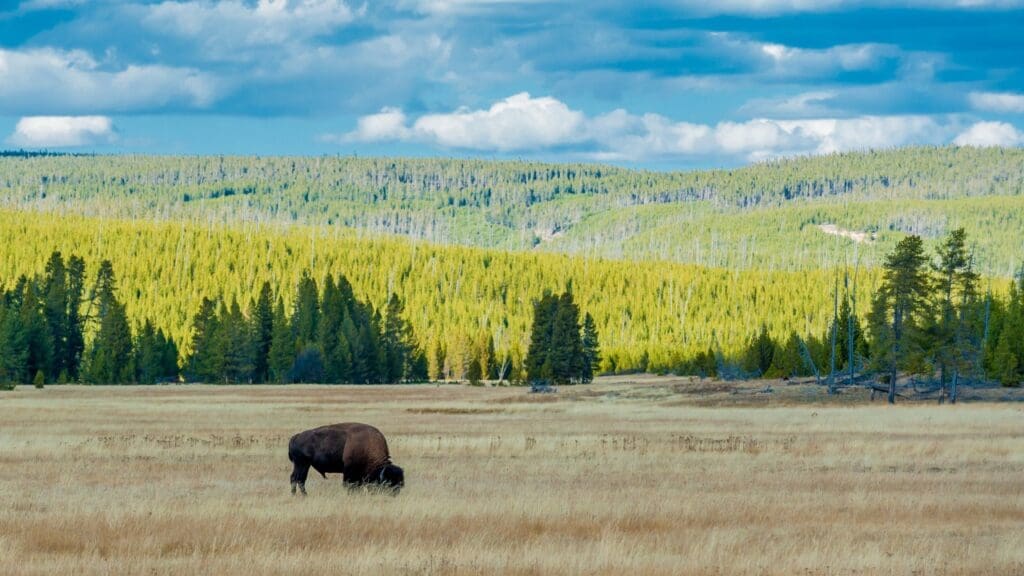
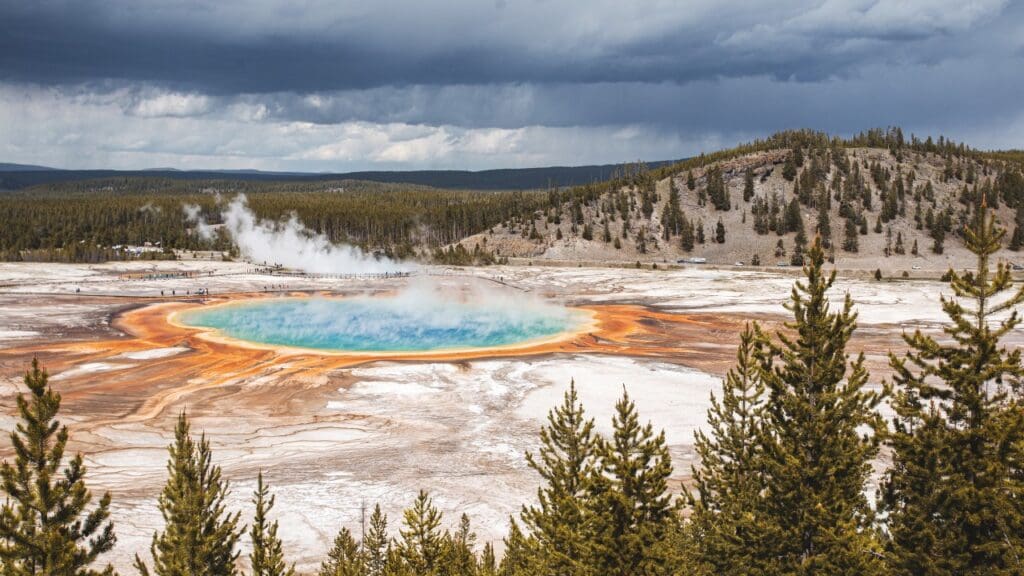
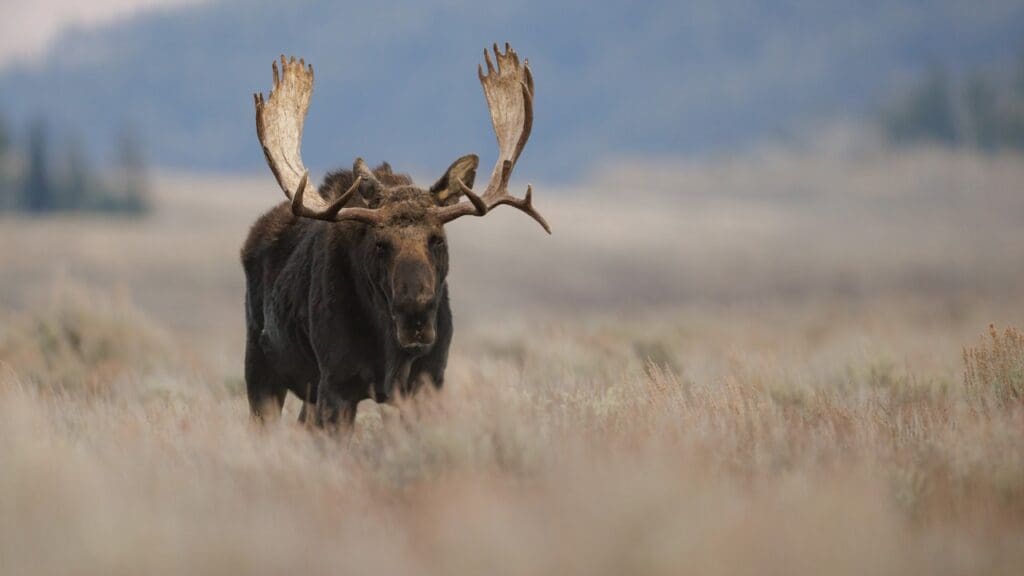
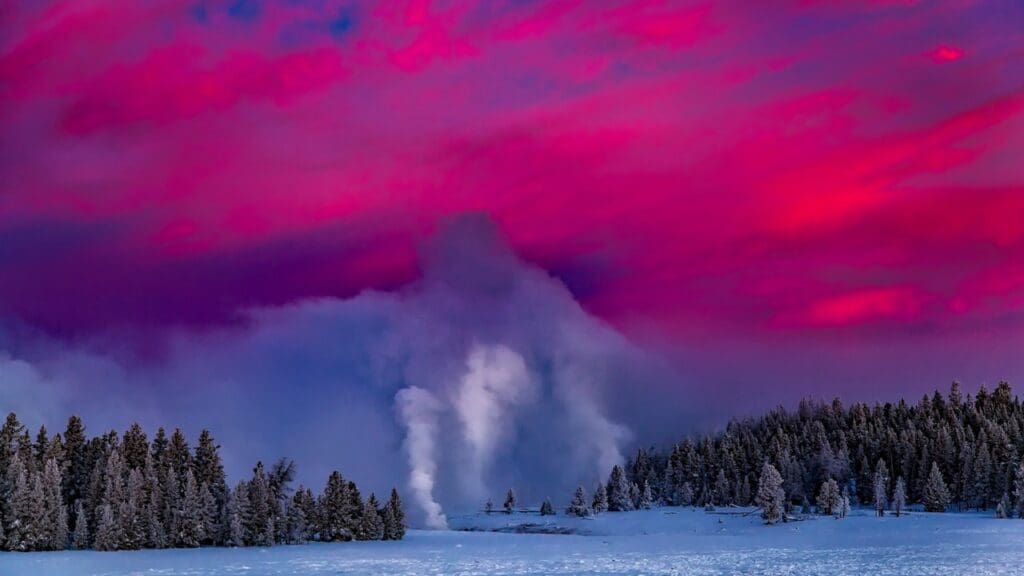
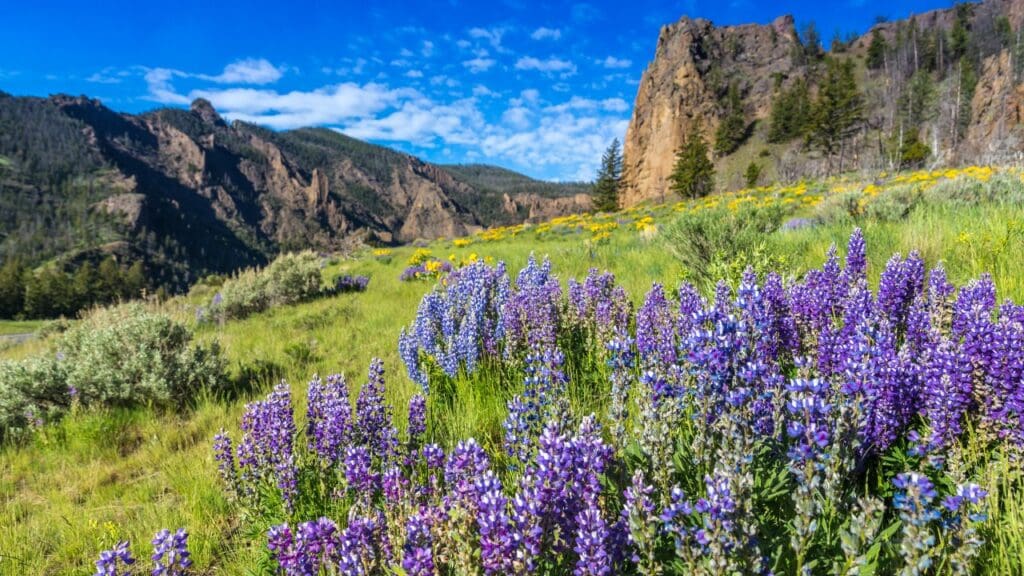
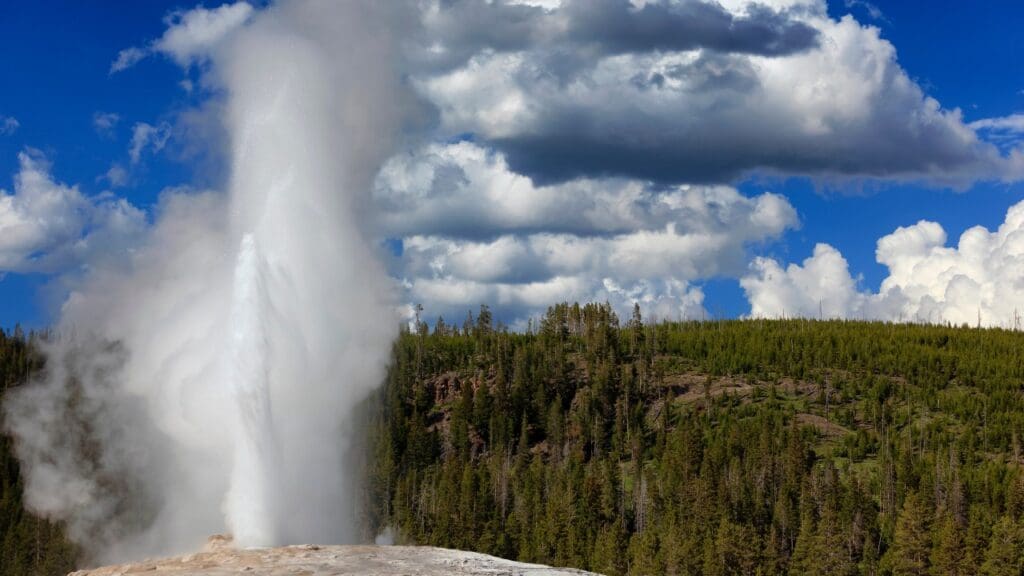
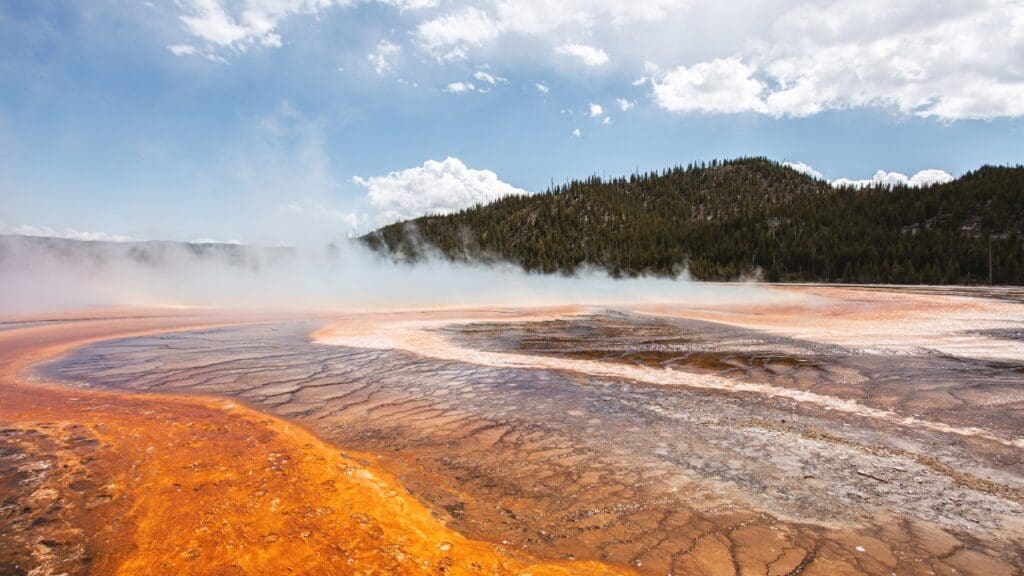
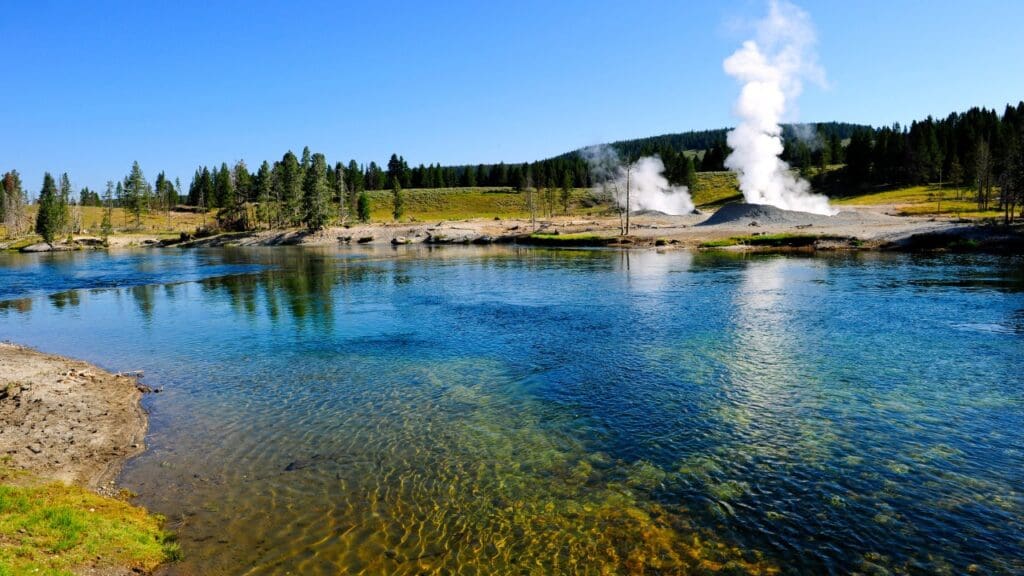
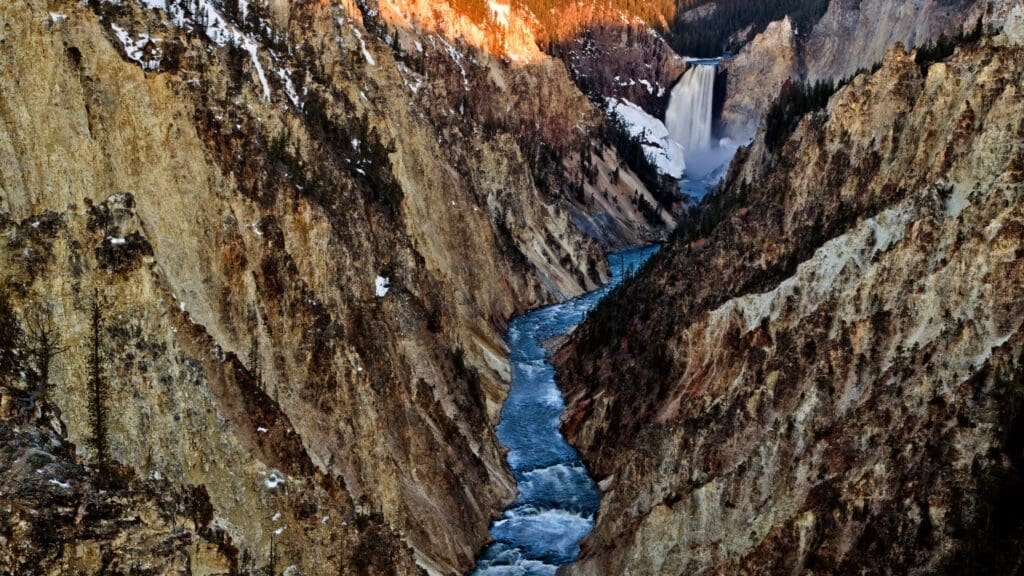
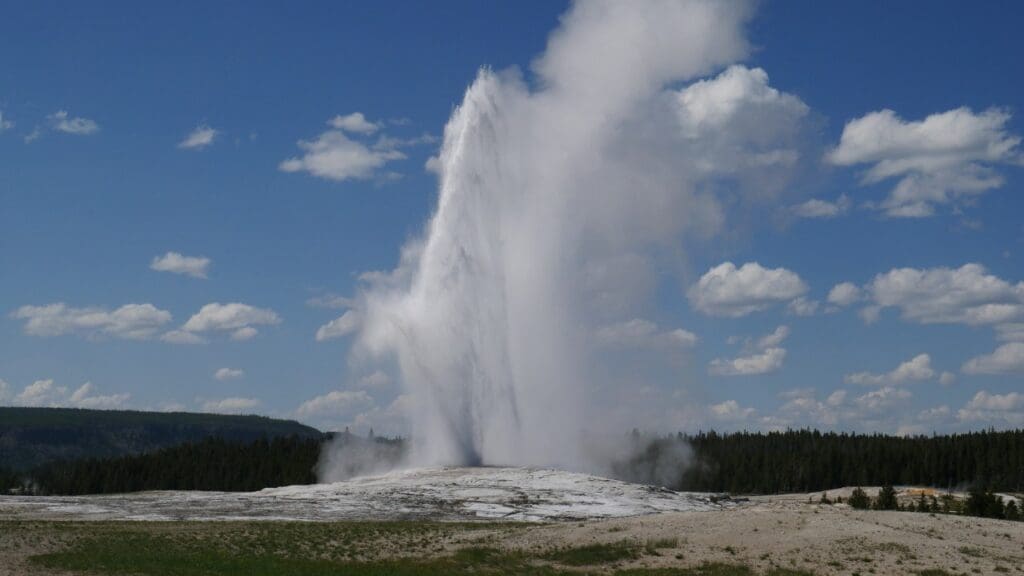
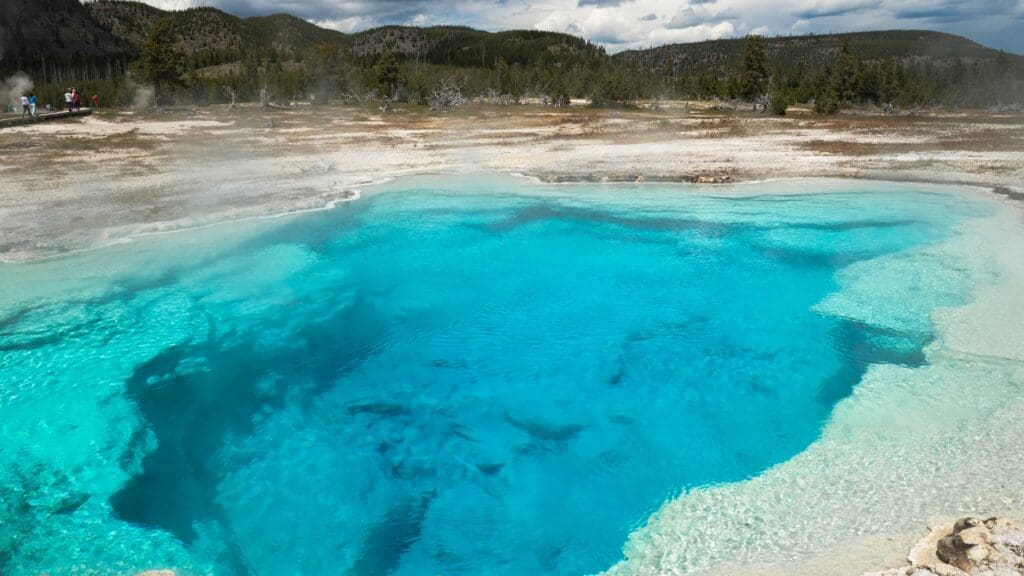
Best Times to Visit:
Yellowstone’s seasons offer distinct experiences, making it a year-round destination.
- Spring (April to May): Wildlife is active, and baby animals are often spotted. Some roads may still be closed due to snow.
- Summer (June to August): The busiest season with all roads and facilities open. Ideal for families and outdoor activities.
- Fall (September to October): Cooler weather and fewer crowds make this a great time for hiking and wildlife viewing.
- Winter (November to March): Snow transforms the park into a winter wonderland. Limited access, but snowshoeing and guided snowmobile tours are available.
8 Best Things to do (Must See Attractions):
Yellowstone National Park is home to some of the world’s most famous geothermal and natural features. Here are the top sights you shouldn’t miss:
- Old Faithful and Upper Geyser Basin: Old Faithful is Yellowstone’s most famous geyser, erupting roughly every 90 minutes. The Upper Geyser Basin, where Old Faithful resides, contains the highest concentration of geothermal features in the park.
- Grand Prismatic Spring: This massive, colorful hot spring in the Midway Geyser Basin is a must-see. For the best views, hike the nearby Fairy Falls Trail to the overlook.
- Mammoth Hot Springs: Known for its terraced travertine formations, Mammoth Hot Springs is both stunning and unique. Explore the boardwalks and the historic Fort Yellowstone nearby.
- Grand Canyon of the Yellowstone: This iconic canyon features dramatic cliffs and waterfalls, including Upper Falls and Lower Falls. The Artist Point overlook provides one of the park’s most photographed views.
- Lamar Valley: Often called “America’s Serengeti,” this valley is the best place to spot wolves, bison, elk, and bears.
- Hayden Valley: Another excellent spot for wildlife watching, particularly during sunrise or sunset.
- Yellowstone Lake: The largest high-elevation lake in North America, Yellowstone Lake is a serene spot for boating, fishing, and picnicking.
- Bonus: Northern lights. These things happen rarely in Yellowstone but they are more common in the fall-winter months.
Wildlife Watching Info:
Yellowstone is renowned for its wildlife. The park is home to species like grizzly bears, black bears, bison, elk, wolves, and bald eagles.
Best Areas for Wildlife Viewing:
- Lamar Valley: Wolves, bears, and bison.
- Hayden Valley: Bison, elk, and waterfowl.
- Tower-Roosevelt Area: Black bears and deer.
Tips for Safe Wildlife Viewing:
- Stay at least 100 yards from bears and wolves, and 25 yards from other wildlife.
- Carry bear spray if hiking in remote areas.
- Use binoculars or a zoom lens for better views without getting too close.
Hiking and Outdoor Activities:
Yellowstone offers a variety of trails for all skill levels, ranging from short walks to challenging backcountry hikes.
Easy Trails:
- Mystic Falls Trail: A 2.5-mile round trip to a beautiful waterfall.
- Brink of the Lower Falls Trail: A short but steep hike to a breathtaking view of the Lower Falls.
Moderate Trails:
- Fairy Falls Trail: A 5-mile round trip to one of Yellowstone’s tallest waterfalls.
- Elephant Back Mountain Trail: A 3.5-mile loop with panoramic views of Yellowstone Lake.
Challenging Trails:
- Mount Washburn Trail: A 6-mile round trip to a summit with incredible vistas.
- Lone Star Geyser Trail: A 5-mile hike to a backcountry geyser that erupts approximately every three hours.
Other Activities:
- Boating: Rent boats or kayaks on Yellowstone Lake (check rentals).
- Fishing: Yellowstone’s streams and lakes are popular spots for fly-fishing.
Where to Stay:
Accommodations inside Yellowstone range from historic lodges to campgrounds:
Tips for Visitors:
- Plan Ahead: Book lodging and campsites early, as they fill up quickly, especially in summer.
- Check the Weather: Yellowstone’s weather can change rapidly, so dress in layers and bring rain gear.
- Arrive Early: Beat the crowds at popular spots like Old Faithful and Grand Prismatic Spring by visiting early in the morning.
- Pack Essentials: Bring plenty of water, snacks, sunscreen, and a map, as cell service is limited.
- Respect Nature: Stay on boardwalks and trails to protect fragile geothermal features and ensure safety.
Itinerary Ideas (1-3 days):
One Day Itinerary: Yellowstone Highlights
Morning:
- Start at Old Faithful: Watch an eruption and explore the Upper Geyser Basin boardwalk.
- Visit Grand Prismatic Spring at Midway Geyser Basin.
Afternoon:
- Stop at Fountain Paint Pot for bubbling mud pots and geysers.
- Explore Norris Geyser Basin, known for Steamboat Geyser.
Evening:
- Head to Artist Point at the Grand Canyon of the Yellowstone for sunset views.
2 Day Itinerary: Classic Yellowstone
Day 1: Geysers and Thermal Features
Morning:
- Visit Old Faithful and Upper Geyser Basin.
- See Grand Prismatic Spring at Midway Geyser Basin.
Afternoon:
- Stop at Norris Geyser Basin.
- Explore Mammoth Hot Springs for its unique travertine terraces.
Evening:
- Stay in Gardiner or Mammoth for dinner and rest.
Day 2: Canyon and Wildlife
Morning:
- Drive to Lamar Valley for wildlife spotting (early is best).
Afternoon:
- Explore the Grand Canyon of the Yellowstone, including Artist Point and Lower Falls.
- Stop by Hayden Valley for bison and elk.
Evening:
- Return to your base or drive toward Yellowstone Lake for sunset.
3 Day Itinerary: In-Depth Exploration
Day 1: Geysers and Hot Springs
- Same as Day 1 of the 2-Day Itinerary.
Day 2: Canyon, Wildlife, and Valleys
- Same as Day 2 of the 2-Day Itinerary.
Day 3: Lake and Lamar Valley
Morning:
- Visit Yellowstone Lake for kayaking or lakeside hiking.
Afternoon:
- Drive through Dunraven Pass to Tower Falls.
- Spend more time in Lamar Valley for wildlife viewing.
Evening:
- Relax at a nearby lodge or enjoy a final sunset at one of Yellowstone’s scenic overlooks.
Tips for All Itineraries
- Arrive Early: Crowds are smaller, and wildlife is more active in the morning.
- Plan Your Meals: Pack snacks or check for dining options at park villages.
- Stay Flexible: Weather and wildlife can affect travel plans, embrace the unexpected!
- Check Park Conditions: Roads or trails may be closed depending on the season.
Nearby Attractions:
- Grand Teton National Park: Just south of Yellowstone, this park features dramatic mountain peaks, pristine lakes, and abundant wildlife.
- Beartooth Highway: A scenic drive with stunning mountain views leading to the Northeast Entrance.
- Cody, Wyoming: Home to the Buffalo Bill Center of the West and a taste of the Old West.
Related:
Final Things to Know:
Yellowstone National Park is a wonderland of geothermal activity, diverse wildlife, and awe-inspiring landscapes. Whether you’re marveling at Old Faithful, hiking to waterfalls, or spotting bison in the Lamar Valley, your first visit to this iconic park will leave you with memories to treasure for a lifetime. With careful planning and an adventurous spirit, Yellowstone offers an unparalleled experience for nature lovers and outdoor enthusiasts alike.
